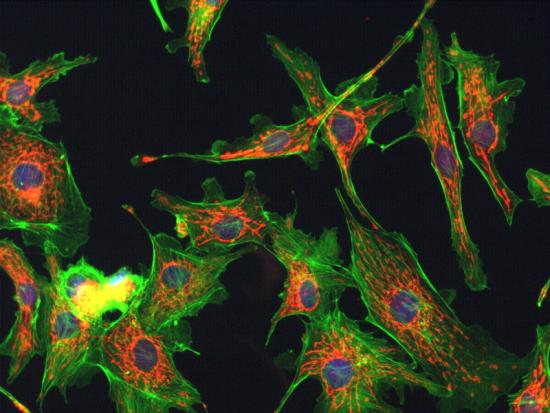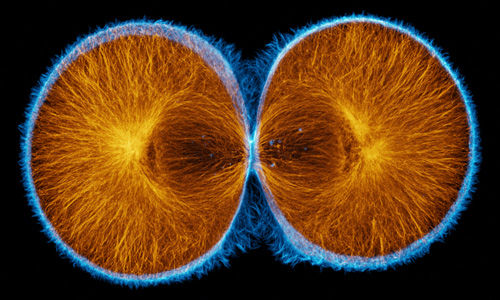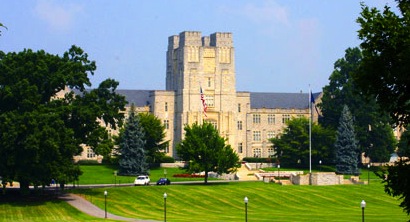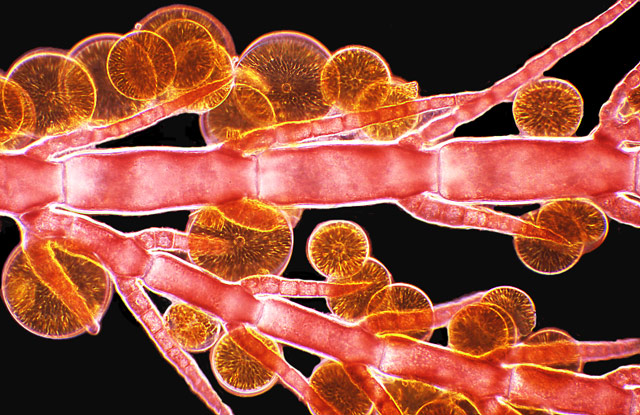|
|
| (60 intermediate revisions not shown) |
| Line 1: |
Line 1: |
| | + | <!-- LORAN, this is what comments look like, comments intended for you will begin with "LORAN" --> |
| | + | |
| | + | <!-- LORAN, put a better picture here pretty please; it'd be really great if you could make a header which includes the little navigation box and an image, to have at the top of every page (navigation box is currently at the bottom of this page; this random example that I found looks pretty simple, it's just a modified box with an image on top: https://2010.igem.org/Team:Baltimore_US; just press "view source" to see and steal their code --> |
| | + | <!-- Image at the top of each page --> |
| | + | <center> |
| | + | [[Image:division.png|225 px|bottom]] |
| | + | [[Image:Virginia_Tech_logo.png|250px]] |
| | + | [[Image:diatoms.png|210 px|bottom]] |
| | + | </center> |
| | | | |
| | <!--- Navigation Box ---> | | <!--- Navigation Box ---> |
| | + | <!-- baltimore's box style: "background-color:#7998AD;" cellpadding="1" cellspacing="1" border="0" bordercolor="#fff" width="924px" align="center" --> |
| | + | {| style=" background-color:#800000;" cellpadding="1" cellspacing="5" border="0" width="90%" align="center" |
| | | | |
| - | {| style="color:#1b2c8a;background-color:#0c7;" cellpadding="3" cellspacing="1" border="1" bordercolor="#fff" width="62%" align="center"
| + | |
| - | !align="center"|[[Team:Virginia_Tech|Home]] | + | !align="center"|[[Team:Virginia_Tech|<span style="color:orange;">Home</span>]] |
| - | !align="center"|[[Team:Virginia_Tech/Team|Team]] | + | !align="center"|[[Team:Virginia_Tech/Team|<span style="color:orange;">Team</span>]] |
| - | !align="center"|[https://igem.org/Team.cgi?year=2011&team_name=Official Team Profile] | + | !align="center"|[https://igem.org/Team.cgi?year=2011&team_name=Virginia_Tech <span style="color:orange;">Official Team Profile</span>] |
| - | !align="center"|[[Team:Virginia_Tech/Project|Project]] | + | !align="center"|[[Team:Virginia_Tech/Project|<span style="color:orange;">Project</span>]] |
| - | !align="center"|[[Team:Virginia_Tech/Parts|Parts Submitted to the Registry]] | + | !align="center"|[[Team:Virginia_Tech/Parts|<span style="color:orange;">Parts Submitted to the Registry</span>]] |
| - | !align="center"|[[Team:Virginia_Tech/Notebook|Notebook]] | + | !align="center"|[[Team:Virginia_Tech/Notebook|<span style="color:orange;">Notebook</span>]] |
| - | !align="center"|[[Team:Virginia_Tech/Safety|Safety]] | + | !align="center"|[[Team:Virginia_Tech/Safety|<span style="color:orange;">Safety</span>]] |
| - | !align="center"|[[Team:Virginia_Tech/Attributions|Attributions]] | + | !align="center"|[[Team:Virginia_Tech/Attributions|<span style="color:orange;">Attributions</span>]] |
| | |} | | |} |
| | | | |
| - | [[Image:Virginia_Tech_logo.png|200px|right|frame]]
| + | __NOTOC__ |
| - | | + | |
| | {|align="justify" | | {|align="justify" |
| | + | <h3>Characterization of Fluorescent Reporters:</h3> |
| | | | |
| - | <h2>Project Overview:</h2>
| + | [[File:kahn_fl_image.jpg|250 px|right]] |
| - | <p>Since the isolation of GFP in 1962, fluorescent proteins have become a ubiquitous tool for studying cellular processes and have recently been used in biosensors. To be effective for this application, however, they will need to be better characterized. To this end, the 2011 VT iGEM team is interested in finding and optimizing good fluorescent reporters which mature and degrade quickly, and which fluoresce brightly. This involves finding fast-folding fluorescent proteins and degradation tags that help destabilize and degrade them. We hope that this work will lay a good foundation for a more quantitative use of fluorescent reporters in the future.</p>
| + | Fluorescent proteins have become ubiquitous tools for studying cellular processes, and are frequently used to visualize the dynamics of synthetic networks in cells. To be particularly effective for these applications, fluorescent proteins must feature fast maturation and degradation rates, and these rates must be well-characterized and documented. The 2011 VT iGEM team has worked to find and characterize fluorescent proteins and degradation tags that more quickly degrade them. Here, we present chemical and mathematical models based on two parameters, maturation and degradation rates, which will hopefully contribute to more quantitative characterization and usage of fluorescent reporters in the future, and will inform future efforts in parts characterization. In conducting our experimentation, we tested different fluorescent proteins with degradation tags in <i>Escherichia coli </i> and <i>Saccharomyces cerevisiae</i> using automated fluorescent microscopy techniques, and then worked to determine a comprehensive, accurate mathematical basis for fluorescent protein characterization. |
| - | | + | |
| - | <p>To tackle this problem, we have split our team into three specialized groups focusing on the Design, Fabrication, and Characterization of our fluorescent protein constructs. This transdisciplinary approach allows us to work more quickly and achieve more ambitious goals</p> | + | |
| | | | |
| - | <h3>Design</h3>
| |
| - | <p>The Design Team designs biological constructs and makes predictions about their performance using the software tool GenoCAD. As a Computer Assisted Design (CAD) tool, GenoCAD has a repository of biological parts, grammatical rules that help users put them together, and an attribute-grammar-based structure that helps users make predictions about how their assemblies will perform before they are made in a lab. The Design Team works with all of these aspects of GenoCAD - searching for promising fluorescent reporters, promoters, and degradation tags to add to the repository, writing grammatical rules specific to this project, and using attributes to model how they expect our constructs to behave. This software has been very useful to our project and has made it easy for the Design Team to quickly design many constructs and pass information about them to the Fabrication Team. </p>
| |
| | | | |
| - | <h3> Fabrication </h3>
| |
| - | <p>The fabrication team experimentally creates the constructs designed in silico. Through traditional cloning or BioBrick assembly, they assemble the various parts comprised in a specific design. The created recombinant molecules are transformed into specific hosts: ''Escherichia coli'' or ''Saccharomyces cerevisiae''. The constructs generated are screened and sequenced to confirm their successful assembly. The positive clones are passed to the characterization team.</p>
| |
| | | | |
| - | <h3> Characterization </h3>
| + | Our team consists of 10 undergraduates from Virginia Tech, UNC Chapel Hill, James Madison University, The University of Maryland, Bluefield State College, and The College of William & Mary. We would like to thank Dr. Jean Peccoud and the Synthetic Biology Group at the Virginia Bioinformatics Institute for lab space, financial support, and guidance. |
| - | <p>The Characterization Team collects and analyzes data on our constructs after they have been designed and fabricated. They specifically want to determine how quickly the different fluorescent protein constructs mature and degrade. To collect data, they are using an automated microscope platform that includes a microfluidic system for trapping cells, and switching the available nutrients to them. All of the hardware is adaptively controlled by the software GenoSIGHT. This arrangement allows them to precisely control when cells are exposed to a stimulus, and automates the collection of fluorescence data. After data is collected it is compared to a mathematical model of expected maturation and degradation processes. Parameter estimation is then used to give us quantitative descriptions of our constructs. This information is used to compare different constructs, and it is passed back to the Design Team. The Design Team then compares these results to their expectations, adjusts their models accordingly, and generates new designs as necessary, beginning the cycle all over again. </p>
| + | |
Characterization of Fluorescent Reporters:

Fluorescent proteins have become ubiquitous tools for studying cellular processes, and are frequently used to visualize the dynamics of synthetic networks in cells. To be particularly effective for these applications, fluorescent proteins must feature fast maturation and degradation rates, and these rates must be well-characterized and documented. The 2011 VT iGEM team has worked to find and characterize fluorescent proteins and degradation tags that more quickly degrade them. Here, we present chemical and mathematical models based on two parameters, maturation and degradation rates, which will hopefully contribute to more quantitative characterization and usage of fluorescent reporters in the future, and will inform future efforts in parts characterization. In conducting our experimentation, we tested different fluorescent proteins with degradation tags in Escherichia coli and Saccharomyces cerevisiae using automated fluorescent microscopy techniques, and then worked to determine a comprehensive, accurate mathematical basis for fluorescent protein characterization.
Our team consists of 10 undergraduates from Virginia Tech, UNC Chapel Hill, James Madison University, The University of Maryland, Bluefield State College, and The College of William & Mary. We would like to thank Dr. Jean Peccoud and the Synthetic Biology Group at the Virginia Bioinformatics Institute for lab space, financial support, and guidance.
|
 "
"



